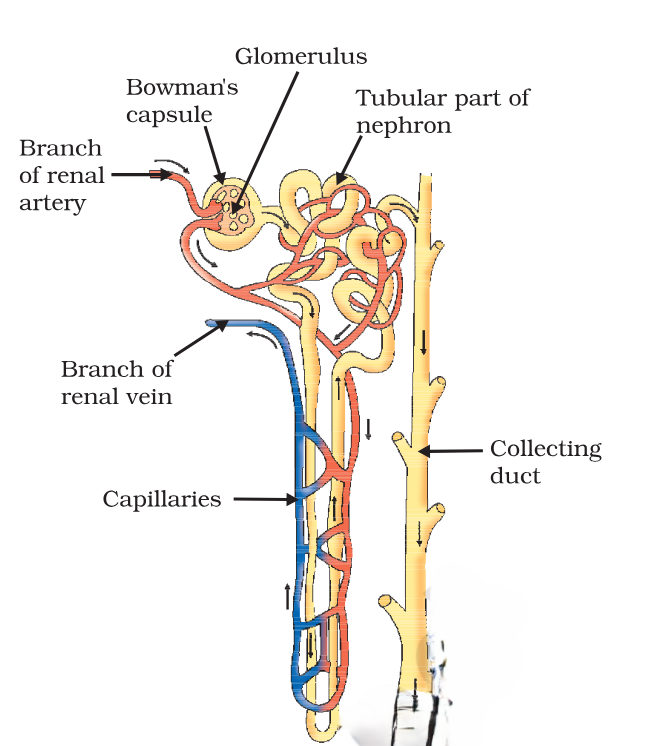Structure of Nephron:

- Bowman’s Capsule: A cup-like sac at the beginning of the nephron that encases the glomerulus, a network of capillaries.
- Proximal Convoluted Tubule (PCT): The tubule leading from Bowman’s capsule where reabsorption of water, ions, and nutrients occurs.
- Loop of Henle: A U-shaped loop that concentrates urine and reabsorbs water and salts.
- Distal Convoluted Tubule (DCT): The tubule after the Loop of Henle where further ion exchange and water reabsorption occur.
- Collecting Duct: Collects urine from multiple nephrons and channels it to the renal pelvis.
Functioning of Nephron:
- Filtration: Blood is filtered in the glomerulus, and the filtrate enters Bowman’s capsule.
- Reabsorption: Essential substances and water are reabsorbed from the filtrate in the PCT, Loop of Henle, and DCT back into the blood.
- Secretion: Additional waste products and excess ions are secreted into the DCT.
- Excretion: The final urine, composed of wastes and excess substances, moves to the collecting duct and then to the bladder for excretion.
MCQs Based on the above question
Question 1: Which part of the nephron is primarily responsible for the initial filtration of blood?
A) Proximal Convoluted Tubule (PCT)
B) Bowman’s Capsule
C) Loop of Henle
D) Collecting Duct
Answer: B) Bowman’s Capsule
Question 2: Where in the nephron does the majority of water, ions, and nutrient reabsorption occur?
A) Bowman’s Capsule
B) Proximal Convoluted Tubule (PCT)
C) Loop of Henle
D) Distal Convoluted Tubule (DCT
Answer: B) Proximal Convoluted Tubule (PCT)
Question 3: Which segment of the nephron is responsible for concentrating urine and reabsorbing water and salts?
A) Proximal Convoluted Tubule (PCT)
B) Distal Convoluted Tubule (DCT)
C) Loop of Henle
D) Collecting Duct
Answer: C) Loop of Henle
Question 4: In the nephron, which process involves the movement of additional waste products and excess ions into the Distal Convoluted Tubule (DCT)?
A) Filtration
B) Reabsorption
C) Secretion
D) Excretion
Answer: C) Secretion
